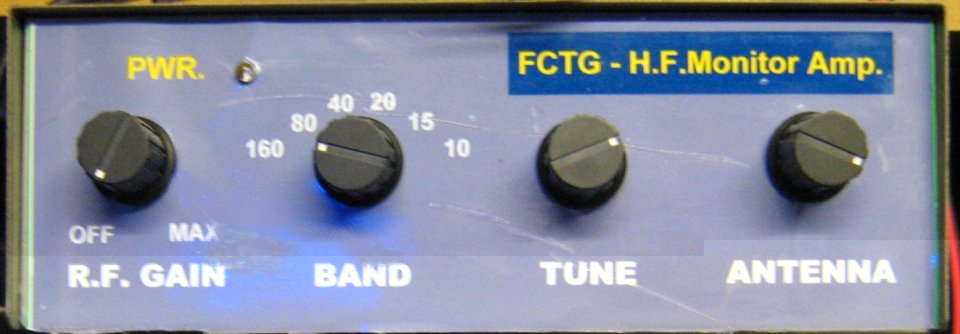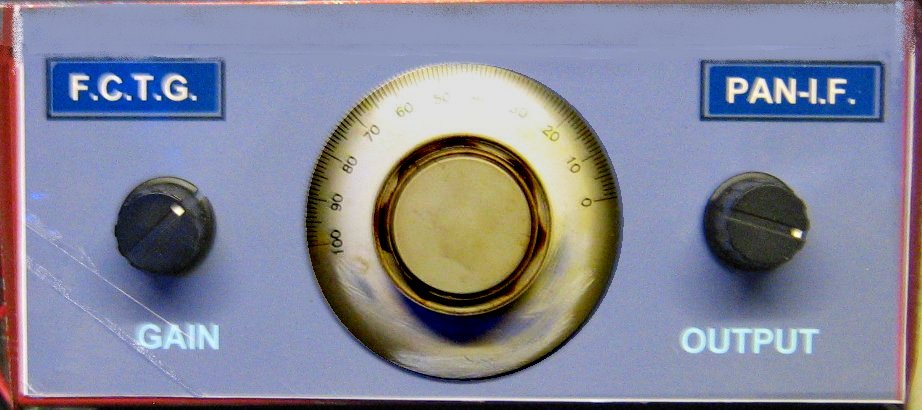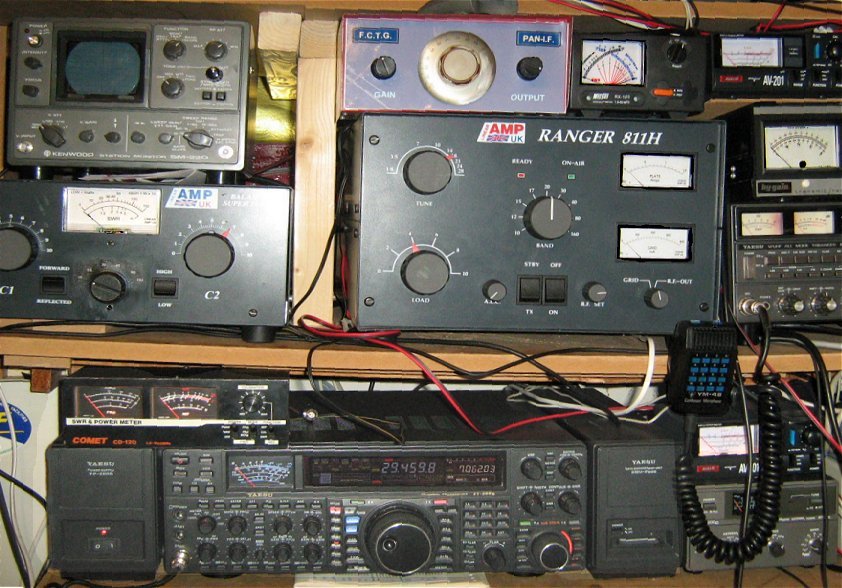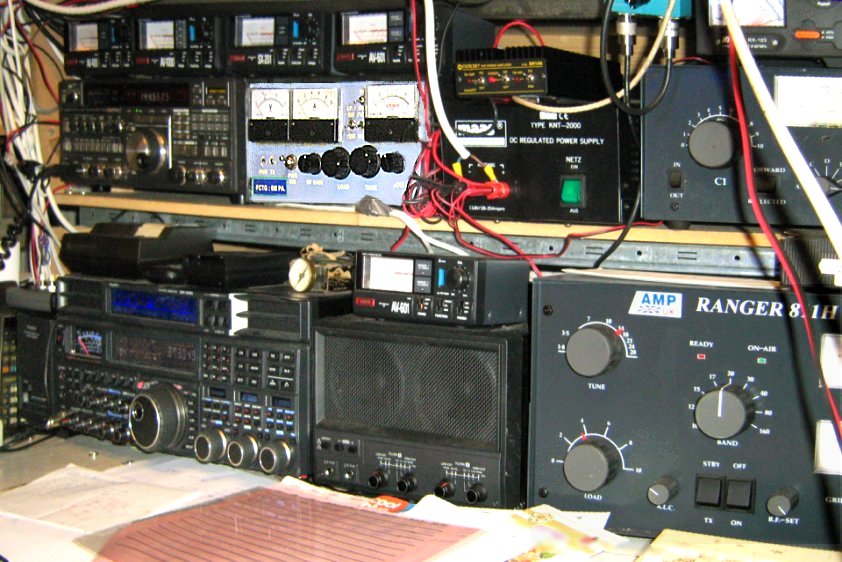PA2TG (Trevor Gale)'s Radio Web Page.
I am also active on the H.F. bands, significantly on the 80 and 40m bands for keeping in touch with people I know in various countries over the world, as well as on 20m for activities such as SSTV (Slow-Scan TeleVision) and RTTY (Radio TeleTYpe).
Now, because in H.F. ("shortwave" working or listening) the English language is widely
used, I include here an excellent illustration of the usage of that language sent to
me by an observant girl whilst in Scotland; read, inwardly digest and subsequently
understand! Click on the image below for this - and a little more!!!!!!


There is not really much point (unless for educative purposes or for very specific
purposes or experimentation) in designing and bulding
one's own H.F. transmitter-receiver ('transceiver') these days,
as the various offerings in differing price categories men that
most of what you require can often be purchased at less cost than building your own.
In this context, without making any advertisement here in this set of pages, I would recommend a
visit to the Martin Lynch and Sons with whom I have no financial connection
amateur radio site at this clickable link for a
wide set of information concerning available equipment and accessories for H.F.
and other Amateur Radio needs. Naturally there are a number of Amateur Radio outlets in
various countries, and it would not be practical to list them all here.
All of that said, there are still a number of accessories which can usefully
be built, such as for the distribution of (decoded) signals, tuning and
matching antennas, and support units such as band displays to assist
operation.
At PA2TG it is also arranged such that other receiver / music (etc.)
sources are muted whenever entering transmit mode on any of the rigs in the station,
in this way I do not have to think of any radios, hi-fi's, or computer-generated
audio entering the microphone when transmitting in speech mode: this is made
possible by the logic gateing of all 'transmit-on' or 'key-down' outputs
and using the sum of these to operate a relay loop which mutes such audio.
As for the main H.F. situation here at PA2TG, then the following
setup is employed:
Firstly there is
a general H.F.-band monitor in front of which I have a tuned amplifier which also
gives me a distributed output for use in my workshop, this can be seen below (mouse over to see):

. This uses a wideband FET stage followed
by a bipolar low-noise stage for distribution which is realised by a trifilar-
wound broadband output transformer.
There are also units that I have designed to assist in using modes
such as SSTV and RTTY - such units as adaptive audio filter units which follow
and notch out unwanted tones in these modes, a unit for autolevel
anti-fading ('QSB') control of signals, and so forth. The design of such units
today is made reasonably simple by the application of integrated circuits
such as switched-capacitor filters, low-noise signal amplifier devices, etc.; therefore
the design of each of these is not detailed here as they are more or less
obvious given a little thought of what one requires.
The Yaesu FT2000D with a data-recorder and display unit was the 'primary'
H.F. rig, which uses the accessory unit, the associated DMU,
as a panoramic display showing across the internal I.F. It replaced the old
primary H.F. rig, the Kenwood TS-850S, with it's associated SM-220 band
display monitor unit. This latter unit is somewhat
non-optimal, has the wrong biassing for the internal mixer, and does not show up
weak signals very well: therefore I designed and built a "Pan-IF" amplifier to go in
front of this and also to be able to feed a second receiver in semi-diversity mode,
and this unit:-

is manually gain-controllable as well as
tunable across the I.F. passband. The Yaesu FT2000D still keeps its own DMU for
other display options such as logging, world map and locations, etc.
It can be seen in its position with its linear and other equipment around in the shack
as follows:-

The NEW 'main' H.F. rig is now the Yaesu FTDX-5000D with its
accesory Station Monitor (SM-5000), its DMU like the one for the 2000D, dual
audio channels for VFO 'A' and 'B' in the SP5000. It's here in the main
situation in the shack for H.F. operation as shown:-

together again with some other surrounding equipment but also with its linear amplifier, the DMU and station monitor, and the MD200 dynamic microphone which according to other operators I have worked provides excellent audio whilst providing that needed "punch" in noisy conditions, especially when used in combination with the equalizer and programmable compressor in the 5000D itself. To end here, the rig's basic front view on the shack ops bench is:-

I never thought the
2000D would be bettered but the FTDX-5000D has superior receiver facilities
and performance and is well worth the money. Both the YEASU H.F. rigs have a
maximum-legal-limit linear amplifier following them and these are used when neccessary.
I must say that I have had the utmost pleasure using this H.F. rig and in
my opinion you'll have to go far and wide to search for one with it's
capabilities, a most satisfying experience indeed.
 You can E-mail the
author of these pages (Trevor Gale) by using
this link, or by sending mail to tgale@tgale.net on the Dutch Internet
service provider XS4ALL.
You can E-mail the
author of these pages (Trevor Gale) by using
this link, or by sending mail to tgale@tgale.net on the Dutch Internet
service provider XS4ALL. 